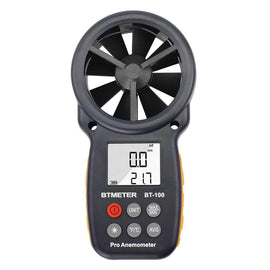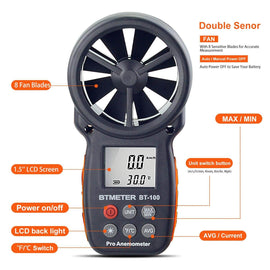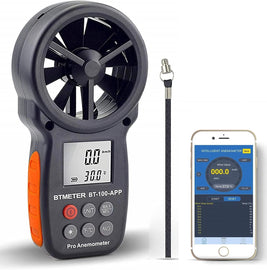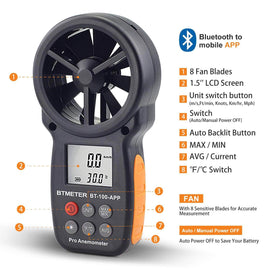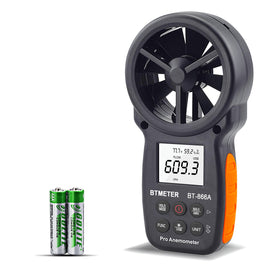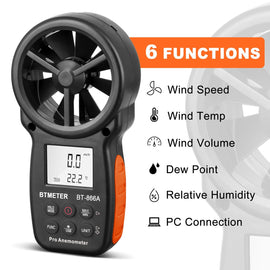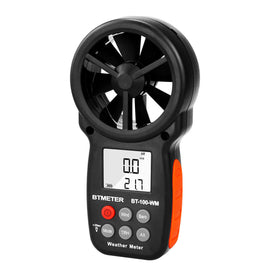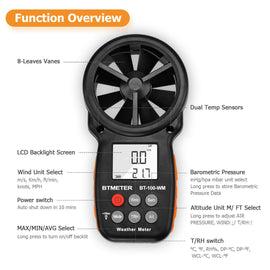Have Questions?
-
Guaranteed Fitment
Always the correct part
-
In-House Experts
We know our products
-
Added Value
Mounting, Balancing
-
Wordwide Delivery
Free shipping on all orders
BTMETER BT-605A Klemmenadapter 600 A AC/DC-Strombackenkaliber für BT-770HC
PRODUKTBESCHREIBUNG
♦ 【Kann hohe Stromwerte messen】 Kann AC/DC bis zu 600 Ampere messen. Dieser Zangenadapter ist für die Messung...
PRODUKTBESCHREIBUNG
♦ 【Kann hohe Stromwerte messen】 Kann AC/DC bis zu 600 Ampere messen. Dieser Zangenadapter ist für die Messung höherer Stromstärken ausgelegt.
♦【Große Backengröße】Maximale Backenkalibergröße bis zu 1,57 Zoll (40 mm), ermöglicht Ihnen eine genaue AC- oder DC-Stromstärkemessung bis zu 600 Ampere, ohne den Stromkreis zu unterbrechen.
♦【Hohe Genauigkeit】+/- 3,0 %+10 Genauigkeit für die Signalausgangsumwandlung. Der Pfeil auf der Backe zeigt die Gleichstromrichtung des positiven Stromflusses an (von positiv nach negativ).
♦ 【Multikompatibilität】 1 mV pro Ampere-Ausgang und standardmäßige 3/4-Zoll-Bananenstecker machen es mit den meisten Multitestern kompatibel, die über eine Empfindlichkeit von 1 mV verfügen.
♦【Verwendung】Das Anbringen einer Verstärkerklemme an einem Netzkabel würde keinen Messwert liefern, Sie müssen eine Verstärkerklemme nur um das stromführende Kabel anbringen.
SPEZIFIKATION:
Gleichstrom: 600 A
Wechselstrom: 600 A
Backenkaliber: 1,77 Zoll
Ausgangskonvertierung: 1 mV/1 A
Konvertierungsgenauigkeit: +/- 3,0 % + 5 Ziffern
Ausgangsimpedanz: 10K
Abmessungen: 7,05 * 3,54 * 1,42 Zoll
BEDIENUNGSANLEITUNGEN:
☆ Funktioniert perfekt mit BTMETER-Multimetern wie: BT-770M, BT-770N, BT-770K, BT-90EPD, BT-90EPC, BT-6688G, BT-6688H usw.
☆ Wenn Sie eine Gleichstrommessung durchführen, drücken Sie immer die Taste „REL“ am Multimeter, um den Wert auf Null zu setzen.
☆ Wenn Sie Wechselstrommessungen durchführen, verwenden Sie die Zange immer nur um das stromführende Kabel herum oder verwenden Sie einen „AC-Leitungssplitter“.
☆ Verbinden Sie den schwarzen Bananenstecker des BT-605A AC/DC-Stromzangenadapters mit dem „COM“-Anschluss und den roten Bananenstecker mit dem „µA mA“-Anschluss.
☆ Drücken Sie die „SELECT“-Taste am Multimeter und die AC/DC-Taste am Zangenadapter, um „DC“- oder „AC“-Messung auszuwählen.
☆ Der Pfeil auf der rechten Seite der Backe zeigt die Gleichstromrichtung des positiven Stromflusses an (von positiv nach negativ).
7 Days free refund, 15 Days free replace, 365 Days Warranty, Lifetime Tech-support.

